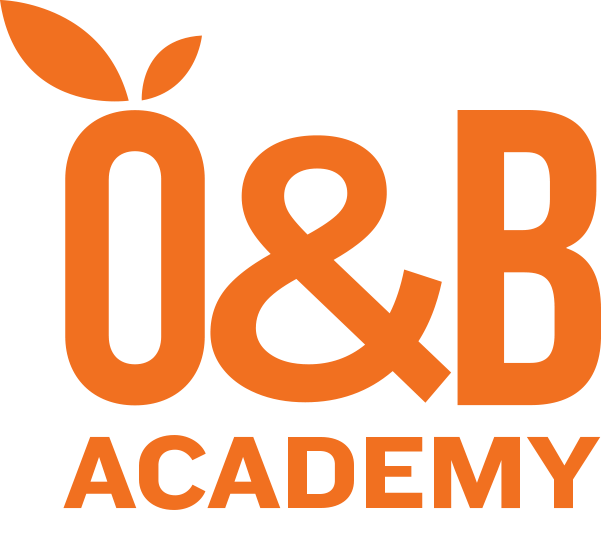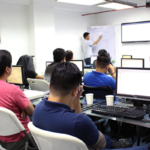DevOps Fundamentals: Enabling Agility via Cloud Native Culture and Mindset
Course Overview
This one-day workshop helps you to understand the benefits of the Cloud Native approach. Using principles from Lean Management and Agile Leadership, we will discuss a contemporary organisational Maturity Model, and identify five key areas to focus on in developing a roadmap for effective, evidence-based digital transformation and the evolution of sustainable Agile software development practices.
You will be introduced to modern development concepts like microservices architecture, service meshes, containerization, continuous delivery (CI/CD), and test automation, as well as the practical requirements for achieving Cloud Native success, across all five areas of the Maturity Model.
Finally, we review some of the possible red flags that indicate misalignment, or immature execution of Cloud Native strategies.
Learning Outcomes
- Describe the main principles of Lean Management and Agile leadership, and apply them in a change management context.
- Assess your organisational maturity across the five key areas in the Continuous Delivery Maturity Model.
- Understand high-level Cloud Native technical concepts such as microservices and containerisation.
- Identify key capabilities, processes and resources needed for successful Cloud Native digital transformation and strategy.
Course Outline
The Five Principles of Lean
- Define Value
- Map the Value Stream
- Identify and remove waste
- Create Flow
- Establish Pull (create products at the time they are needed, in the right quantities)
- Seek Perfection
- Feedback loops
- Plan-Do-Check-Act
The Goals of Lean
- Optimize the whole
- Eliminate waste
- Build quality in
- Deliver value quickly
- Create knowledge
- Keep options open (make decisions with as much current information as possible)
- Respect people
- Build in resilience
Continuous Delivery Maturity Model
- Culture & Organization
- Design & Architecture
- Build & Deploy
- Test & Verification
- Information & Reporting
Agile Software Delivery
- Cross-functional teams (ops, dev, testing, architecture, product, project management)
- Value Streams vs Projects
- Iterative development and customer/stakeholder feedback loops vs Waterfall
- Agile at scale
- Lean Budgets, focused on Value Streams
What is Cloud Native?
- Leverage public cloud infrastructure
- Flexible resources (scale up/scale down as required)
- Application usage cost model vs capital-intensive
- Making costs more predictable
- Infrastructure diversification (multi-cloud)
- Microservices architecture
- What are microservices?
- Why are they more efficient?
- Microservices and Value Streams
- Containerization
- What is a container?
- The OCI standard
- Easing infrastructure dependencies
- Simplifying deployment processes
- What is Docker?
- What is Kubernetes?
- Service Meshes
- What is a service mesh?
- How can a service mesh design boost value delivery (velocity)?
- What is a control plane?
- Multi-cloud solutions
- Tanzu Service Mesh unique benefits
- Continuous Delivery
- Infrastructure as Code (IaC)
- Change control through software version control
- Just-in-Time (Frequent) Releases
- Security best practices
- Centralised, auditable policy management
- Commercial open-source
What do I need to go Cloud Native?
- Talent strategy
- Cloud architects
- Engineers with cloud experience
- Ops + Dev = DevOps (+ Business!)
- Cloud-ready mindset/culture (companywide)
- Appropriate training / re-skilling
- Change management
- Software Architecture
- Cloud Native architecture for new initiatives
- Rearchitect legacy apps
- Designing for scale
- High availability
- Blue/Green and Canary Deployments
- Feature hiding
- Programmable Infrastructure
- Production/Test Environment Parity
- Democratized access (Ops + Dev = DevOps)
- Automated Testing
- Monitoring and Reporting
Red Flags
- Lift and shift migration (moving the same legacy of problems into the cloud)
- Organizational siloes
- High defect rates
- Low user adoption
Skill Level
Suitable For
Business leaders, development leads, operations teams and developers. Anyone looking towards Cloud Native solutions.
Duration
day
Related Topics
DevOps Fundamentals: Enabling Agility via Cloud Native Culture and Mindset
Skill Level
Suitable For
Business leaders, development leads, operations teams and developers. Anyone looking towards Cloud Native solutions.
Duration
day
Related Topics
Course Overview
This one-day workshop helps you to understand the benefits of the Cloud Native approach. Using principles from Lean Management and Agile Leadership, we will discuss a contemporary organisational Maturity Model, and identify five key areas to focus on in developing a roadmap for effective, evidence-based digital transformation and the evolution of sustainable Agile software development practices.
You will be introduced to modern development concepts like microservices architecture, service meshes, containerization, continuous delivery (CI/CD), and test automation, as well as the practical requirements for achieving Cloud Native success, across all five areas of the Maturity Model.
Finally, we review some of the possible red flags that indicate misalignment, or immature execution of Cloud Native strategies.
Learning Outcomes
- Describe the main principles of Lean Management and Agile leadership, and apply them in a change management context.
- Assess your organisational maturity across the five key areas in the Continuous Delivery Maturity Model.
- Understand high-level Cloud Native technical concepts such as microservices and containerisation.
- Identify key capabilities, processes and resources needed for successful Cloud Native digital transformation and strategy.
Course Outline
The Five Principles of Lean
- Define Value
- Map the Value Stream
- Identify and remove waste
- Create Flow
- Establish Pull (create products at the time they are needed, in the right quantities)
- Seek Perfection
- Feedback loops
- Plan-Do-Check-Act
The Goals of Lean
- Optimize the whole
- Eliminate waste
- Build quality in
- Deliver value quickly
- Create knowledge
- Keep options open (make decisions with as much current information as possible)
- Respect people
- Build in resilience
Continuous Delivery Maturity Model
- Culture & Organization
- Design & Architecture
- Build & Deploy
- Test & Verification
- Information & Reporting
Agile Software Delivery
- Cross-functional teams (ops, dev, testing, architecture, product, project management)
- Value Streams vs Projects
- Iterative development and customer/stakeholder feedback loops vs Waterfall
- Agile at scale
- Lean Budgets, focused on Value Streams
What is Cloud Native?
- Leverage public cloud infrastructure
- Flexible resources (scale up/scale down as required)
- Application usage cost model vs capital-intensive
- Making costs more predictable
- Infrastructure diversification (multi-cloud)
- Microservices architecture
- What are microservices?
- Why are they more efficient?
- Microservices and Value Streams
- Containerization
- What is a container?
- The OCI standard
- Easing infrastructure dependencies
- Simplifying deployment processes
- What is Docker?
- What is Kubernetes?
- Service Meshes
- What is a service mesh?
- How can a service mesh design boost value delivery (velocity)?
- What is a control plane?
- Multi-cloud solutions
- Tanzu Service Mesh unique benefits
- Continuous Delivery
- Infrastructure as Code (IaC)
- Change control through software version control
- Just-in-Time (Frequent) Releases
- Security best practices
- Centralised, auditable policy management
- Commercial open-source
What do I need to go Cloud Native?
- Talent strategy
- Cloud architects
- Engineers with cloud experience
- Ops + Dev = DevOps (+ Business!)
- Cloud-ready mindset/culture (companywide)
- Appropriate training / re-skilling
- Change management
- Software Architecture
- Cloud Native architecture for new initiatives
- Rearchitect legacy apps
- Designing for scale
- High availability
- Blue/Green and Canary Deployments
- Feature hiding
- Programmable Infrastructure
- Production/Test Environment Parity
- Democratized access (Ops + Dev = DevOps)
- Automated Testing
- Monitoring and Reporting
Red Flags
- Lift and shift migration (moving the same legacy of problems into the cloud)
- Organizational siloes
- High defect rates
- Low user adoption



